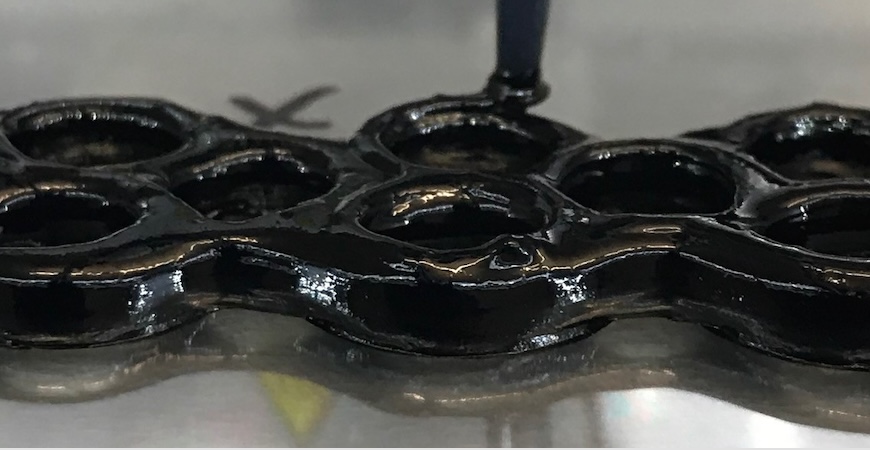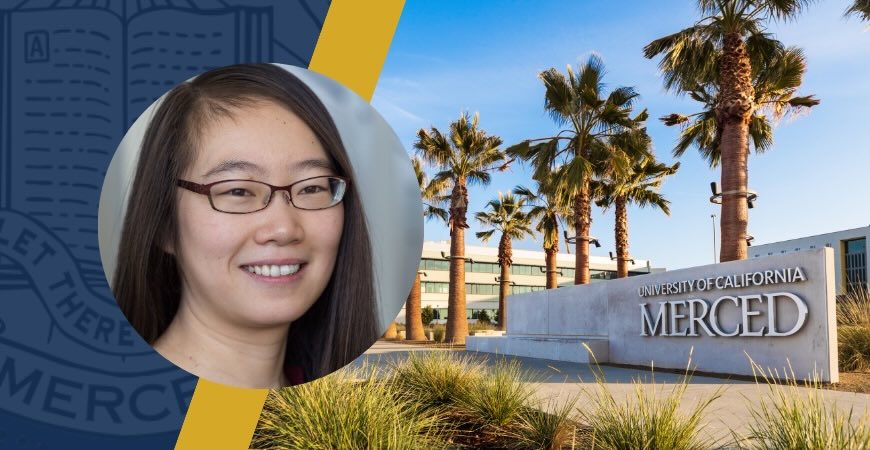
Much of the work Yue (Jessica) Wang does at UC Merced sounds like science fiction: She creates flexible material that gets stronger the more you hit it. And it conducts electricity.
Science, yes. Fiction, no.
This work is happening. It was featured in a presentation materials scientist Di Wu from the Wang lab delivered this spring at the American Chemical Society meeting in New Orleans.
The material Wang's team developed has "adaptive durability," which means it stays soft when being used or moved through consistent motion, then gets stronger when abruptly hit or stretched. The material also conducts electricity, making it ideal for the next generation of wearables or personalized medical sensors.
Inspiration for the new material came from a method commonly used to thicken mixtures while cooking - a cornstarch slurry.
"When I stir cornstarch and water slowly, the spoon moves easily," Wang said. "But if I lift the spoon out and then stab the mixture, the spoon doesn't go back in. It's like stabbing a hard surface." This slurry has adaptive durability, shifting from malleable to strong, depending on the force applied. Wang's team set out to mimic this property in a solid conductive material.
Many materials, such as metals, that conduct electricity are hard, stiff or brittle. But researchers have developed ways to make soft and bendable versions using conjugated polymers - long, spaghetti-like molecules that are conductive. Yet most flexible polymers break apart if they undergo repeated, rapid or large impacts. Wang's team set out to select the right combination of conjugated polymers to create a durable material that would mimic the adaptive behavior of cornstarch particles in water.
"Polymer-based electronics are very promising," said Di Wu, a postdoctoral researcher. "We want to make the polymer electronics lighter, cheaper and smarter."
Initially, the researchers made an aqueous solution of four polymers. After spreading a thin layer of the mixture and drying it to make a film, the team tested the stretchy material's mechanical properties.
They found that rather than breaking apart from very rapid impacts, it deformed or stretched out. The faster the impact, the more stretchy and tough the film became.
The four polymers, two with positive charges and two with negative charges, tangle like a big bowl of spaghetti and meatballs, said Wu, who presented the lab's work at the ACS meeting. "Because the positively charged molecules don't like water, they aggregate into meatball-like microstructures."
The team's hypothesis is that the adaptive behavior comes from the meatballs absorbing the energy of an impact and flattening when hit, but not completely splitting apart.
"They can become flexible and stronger when you make a sudden movement, but it is flexible when you just do your daily routine movement," Wu said. "They're not constantly rigid or constantly flexible. They just respond to your body movement."

Looking ahead, the team will shift toward demonstrating the applicability of their lightweight conductive material. Possibilities include soft wearables, such as integrated bands and backside sensors for smartwatches, and flexible electronics for health monitoring, such as cardiovascular sensors or continuous glucose monitors.
The team also formulated a previous version of the adaptive material for 3D printing and produced a replica of a team member's hand, demonstrating the potential incorporation into personalized electronic prosthetics. Wang thinks the new composite version should also be compatible with 3D printing to make whatever shape is desired.
The adaptive durability of the material means future biosensor devices could be flexible enough for normal human motion but resist damage if they're accidentally bumped or hit hard, Wang said.
"There are a number of potential applications, and we're excited to see where this new, unconventional property will take us."
Wang's research is funded by UC Merced, a National Science Foundation CAREER grant, an Army Research Office Early Career Award, the Department of Energy, and an Arnold and Mabel Beckman Foundation's Young Investigator award.



